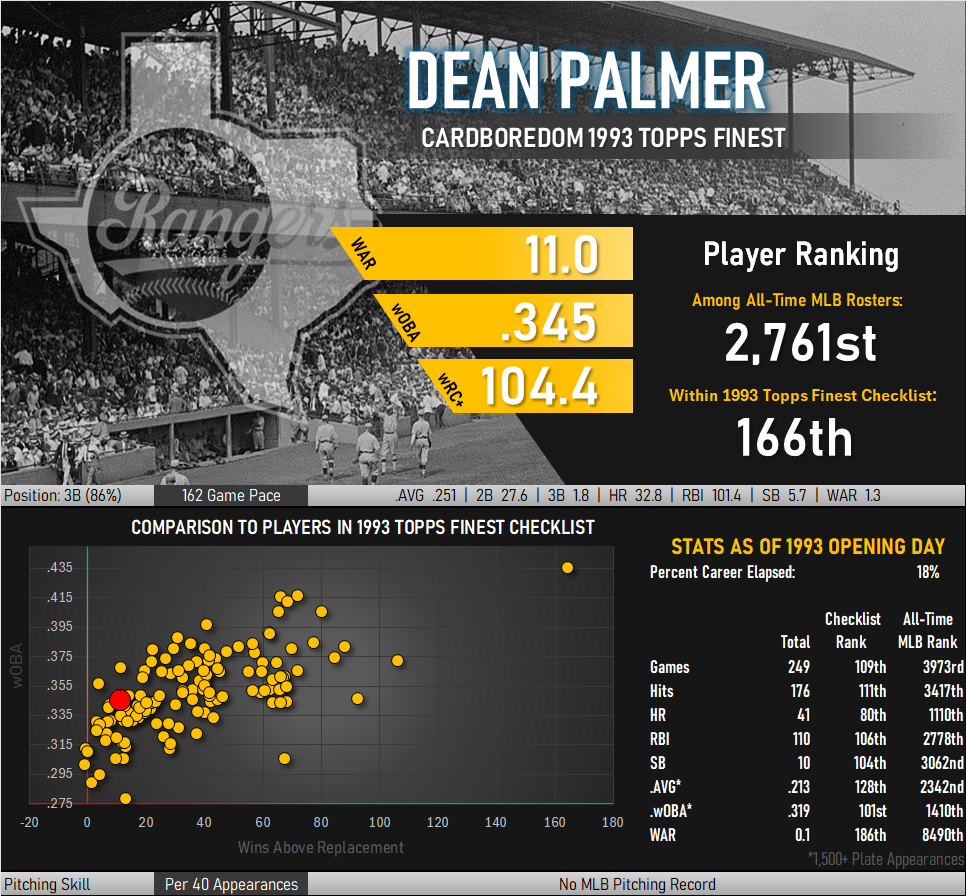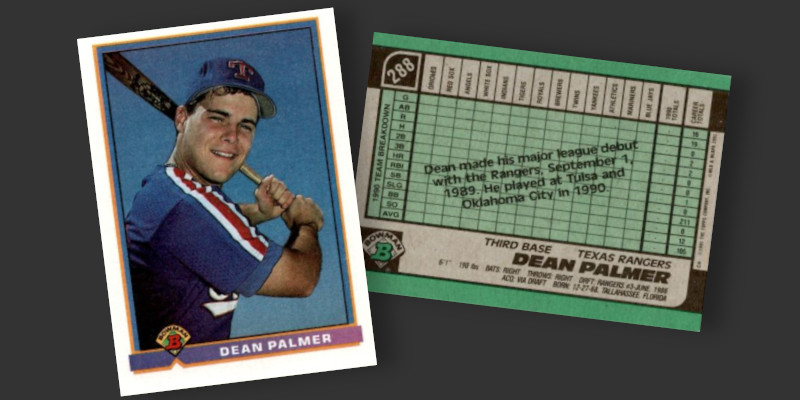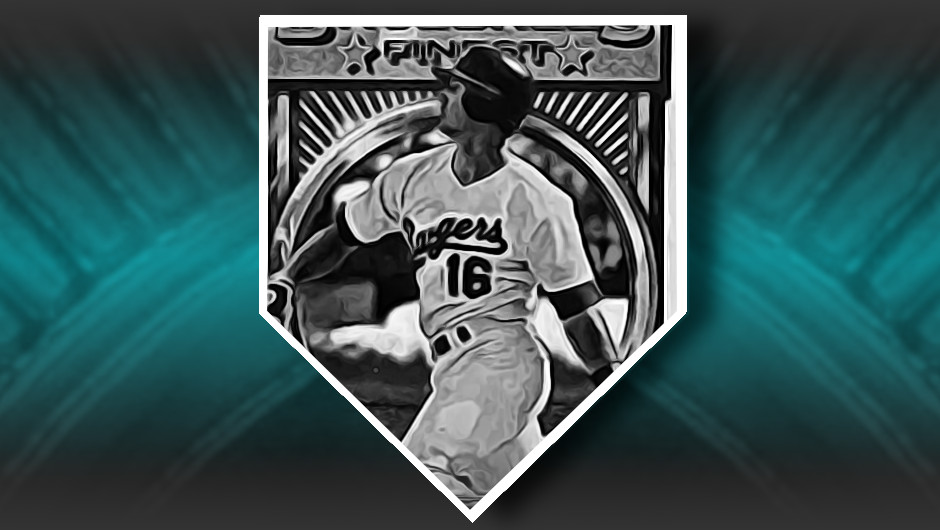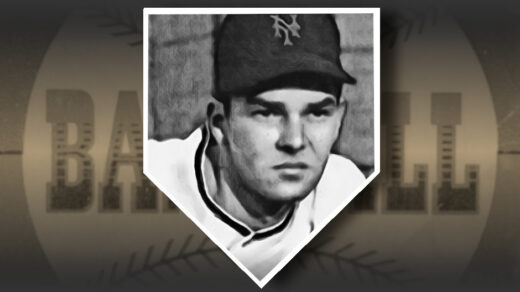Mention Roger Maris and the first thing that comes to mind is home runs. Maris grabbed the attention of the baseball world by famously breaking Babe Ruth’s single season HR record with 61 in 1961. He wasn’t just a single season wonder, as he had slugged his way past teammate Mickey Mantle for the 1960 American League MVP award. Injuries led to a production decline and eventual early retirement just a decade into his career. 60 years after breaking the home run record his name is still synonymous with the longball.
The Texas Rangers of the 1990s were a team focused on power with the lineup anchored by a string of power hitters. One of these was Dean Palmer who finished his career with 275 home runs. This happens to be the same number as Maris. Like Maris, Palmer saw his career cut short by a nagging injury. The Rangers’ outfielder hurt his neck while doing pullups in what has to be one of the stranger ways to hurt oneself.
A few cursory coincidences aside, why should Palmer be considered a better home run hitter than Maris? Wasn’t Maris known for hitting a large number in a very short career? Palmer hit just as many in a career that was 10% shorter than that of his New York counterpart. Palmer accomplished his feats in 1,357 games against 1,463 for Maris. This gives Palmer an average of 33 HRs per 162 games compared to 30 for Maris. In this one high profile metric Palmer wins.

Stunt Double
Photographers and card designers engage in a flurry of activity prior to each new season. All potential card subjects must be photographed. Stats need tabulating. Biographic tidbits need proofing. Someone needs to check to see that nobody left their fly open. Sometimes mistakes are made.
Dean Palmer’s rookie card appears in the 1991 Bowman set, though the player himself does not. The smiling left-handed hitter looking out from the photograph is the similarly named Dan Peltier. He would go on to log 274 total plate appearances, one less than Dean’s lifetime home run tally.

1993 Finest Refractor #159
The seventh refractor added to my set, this card was acquired via COMC and later sent off to PSA. It has proved to be one of the more cost-effective additions to the collection. Palmer’s injuries relegated his cards to the common bin, but a look through an old Beckett price guide shows more than just a passing interest from collectors. The June 1994 edition shows the Palmer card trading on par with Finest cards of Mo Vaughn, Andre Dawson, Eddie Murray, and John Kruk.
I remember eagerly reading Texas Rangers box scores each morning, looking for the next longball from Juan Gonzalez, Jose Canseco, Rafael Palmeiro, or Dean Palmer. The front of the card shows Palmer watching one of these hits sail into the distance. The back, however, seems to show a look of disappointment on a swing-and-miss. His career stats line on the back shows 41 home runs alongside a .213 batting average. Only two years into his MLB career Palmer was already building a reputation as a feast or famine hitter.










